Californians have been hearing predictions that the ornamental lawn is becoming a thing of the past in the drought-stricken state. New state rules approved this week by the California Water Commission bring those predictions one step closer to reality.
Starting December 1, turfgrass and other thirsty plants will be effectively limited to 25 percent of the yard in new residential landscapes of 500 square feet or more and yards of 2,500 square feet or more undergoing renovations that require a permit, plan check or design review. Landscapes of less than 2,500 square feet have the option of complying with a prescriptive checklist to meet the restrictions.
The new rules are a change from existing restrictions, which allow 33 percent of the landscape to contain high-water-use plants and apply only to landscapes of 2,500 square feet or more. State officials say the new restrictions mean landscapes will consume up to one-third less water on average. “Revising the ordinance was well due. We’re moving in the direction Californians would like to move,” says Vicki Lake, program manager at the state Department of Water Resources. “Our landscapes have to be just as resilient as our climate.”
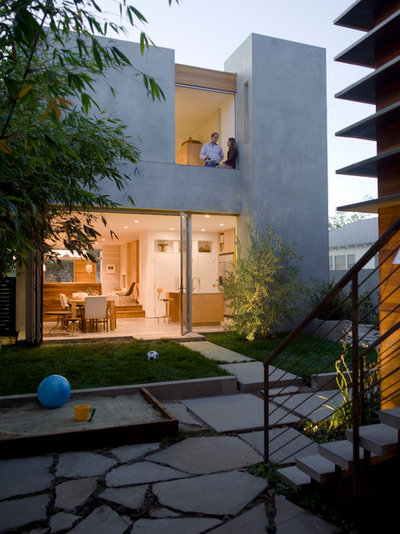
Glynn Designbuild, Inc.
The California landscape professionals Houzz spoke with about the changes agree. “Over the last eight to 10 years, we have been becoming more and more water-conscious with our planting design and irrigation design,” says Tim Jachlewski of In-Site Landscape Architecture Inc. in San Diego. “We love turfgrass, but only when it is used in its proper place: for recreational purposes rather than aesthetics.”
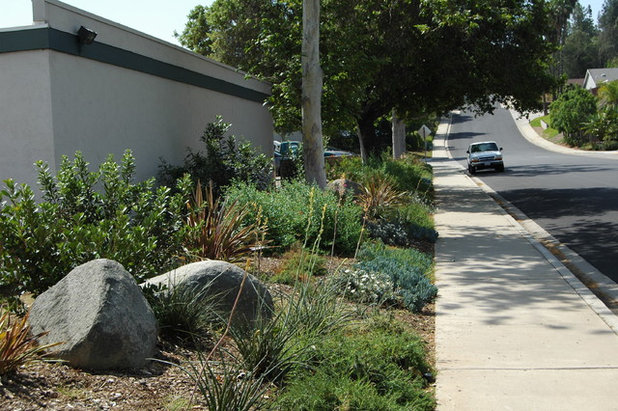
In-Site Landscape Architecture, Inc.
“I think the California landscape could look amazing in the next five years,” Jachlewski says. “With turf being reserved for recreational use … the remaining landscape can be transformed into a ‘California style’ of native plants that provide seasonal interest, flowers, textures and habitat value that will attract birds, butterflies and pollinators to our landscapes. California offers many lush-looking native and climate-appropriate nonnative plant species that will transform our landscapes into beautiful, dynamic settings to enjoy.”
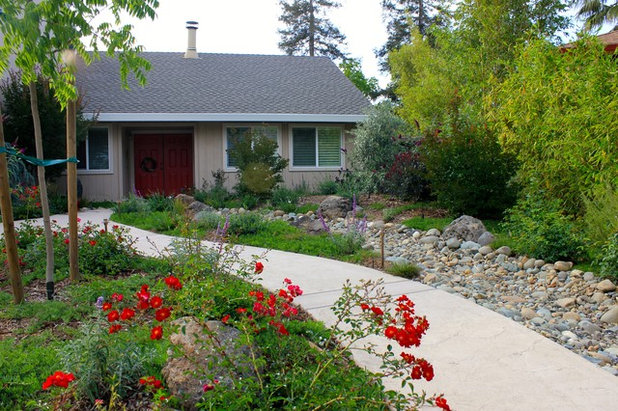
Michael Glassman & Associates
Landscape designer Michael Glassman of Davis, California, echoes this sentiment. “A lot of my clients are realizing that the front yard doesn’t have to be a throwaway space,” he says. In areas that once would have been prime real estate for lawns, he says, they are adding patios, hardscape and pathways. Glassman thinks more shade trees also should be planted to replace lawn. “It’s not just about drought-tolerant plants, it’s about reclaiming the front yard as a functional space,” he says.
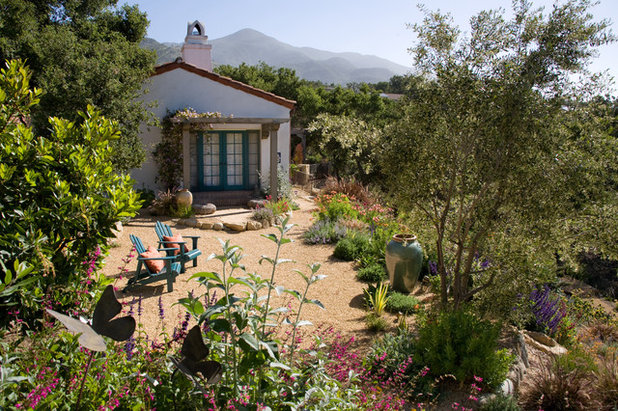
Margie Grace - Grace Design Associates
Santa Barbara landscape designer Margie Grace sees opportunities for creativity in the new regulations. “We’re on the cusp of an explosion in landscape innovation. We’ll see new aesthetics emerging, new technologies, practices and methodologies, and the emergence of ecology-based landscaping. This is the kind of shift in mind-set that precedes rapid change on a large scale,” Grace says.
“More and more I’m drawn to naturalistic designs — where land form, stone, light are more impactful than the plant material in the overall composition — and to modern, streamlined, simple spaces where plants are used as sculpture,” she says.
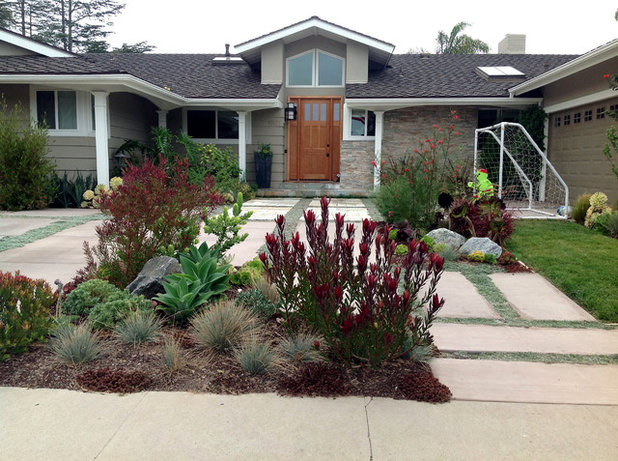
Camille Beehler Landscape Design
The revisions to California’s Model Water Efficient Landscape Ordinance came in response to an April 1 executive order by Governor Jerry Brown, which instructed regulators to update the ordinance to limit lawn coverage and increase water efficiency. About half of the state’s urban water consumption is used for outdoor irrigation, according to the Water Resources Board.
The new rules also apply to commercial landscapes. New lawn may be installed in those only when it will be used for a specific purpose — recreation, picnicking, public gathering — or irrigated with recycled water.
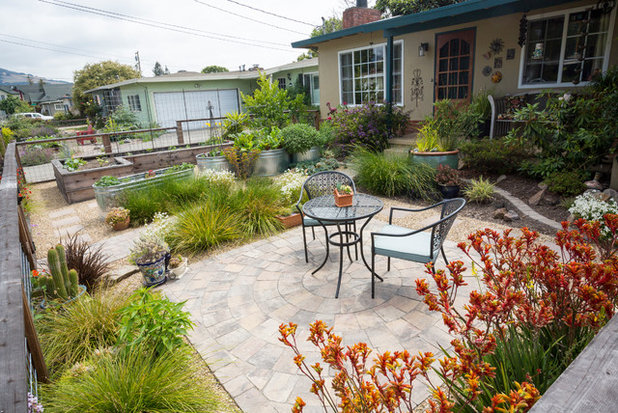
Susie Dowd Markarian, Landscape Design
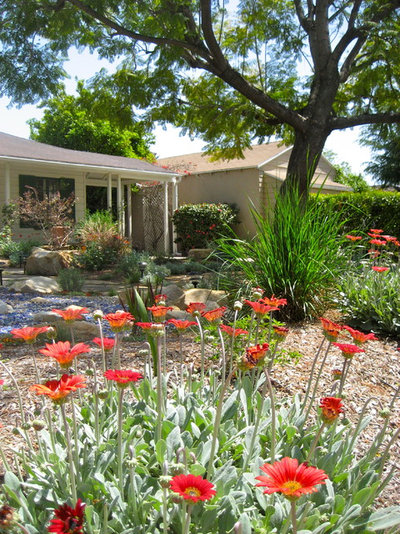
Shirley Bovshow
Under the revised regulations, each new landscape will have a water allowance that equates to roughly 25 percent cool-season grasses, such as Kentucky bluegrass, or other high-water-use plants. In general terms, the water allowance is a calculation that includes the amount of water plantings use — as defined by the University of California’s Water Use Classification of Landscape Species — and a landscape’s irrigation efficiency.
Landscapes of less than 2,500 square feet will have the option of meeting a prescribed checklist of features rather than adhering to a water allowance. Additionally, landscapes of less than 2,500 square feet watered entirely by greywater or captured rainwater may follow an irrigation checklist rather than be subject to the entire ordinance.
The state water board adjusted the proposal to allow the checklist option after a comment period in which the California Landscape Contractors Association and others voiced concerns that the water-allowance model was too complicated for smaller residential landscapes to follow.
“I thought they did a good job of listening,” says the association’s Larry Rohlfes. ”It just makes more sense.”
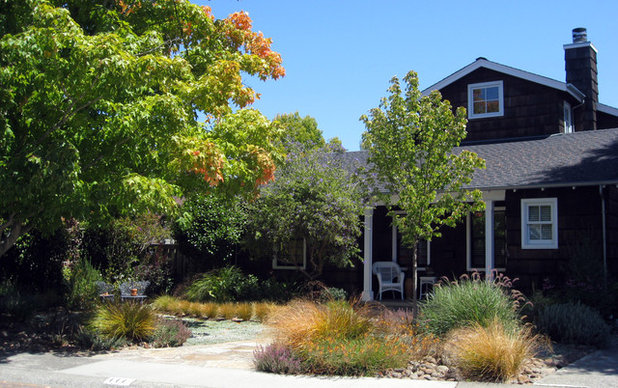
Dig Your Garden Landscape Design
The Department of Water Resources expects the new water ordinance to cut water use in California homes by 12,000 gallons a year, or 20 percent, and in commercial landscapes by roughly 35 percent. It anticipates that California will add 472,000 single- and multi-family homes, with 20,000 associate acres of landscape, in the next three years. Officials say it’s important to have these landscape standards in place for future growth.
The water commission sees these updates as regulating what has already become a standard in California, as many residents have been reducing their lawns on their own. “The community is saving water, but at the same time they are seeing new developments go in, with the high water use associated with those,” Lake says.
California’s landscape designers have been cutting back on water consumption in their own projects as well. The San Diego chapter of the Association of Landscape Architects distributed a position paper in 2009 outlining and encouraging the adoption of policies and practices relating to water conservation and the value of regionally appropriate landscapes.
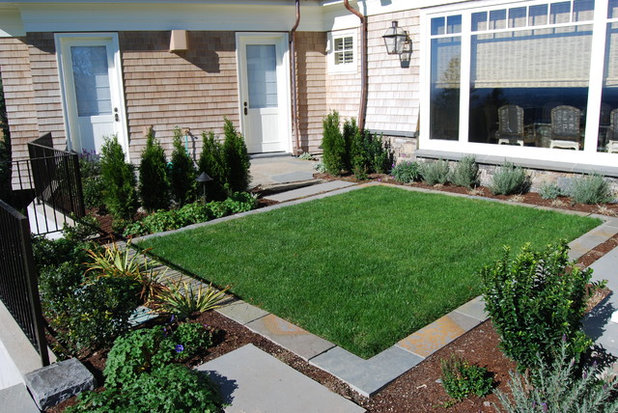
Samuel H. Williamson Associates
Small Gem Lawns: More Impact From Less Grass
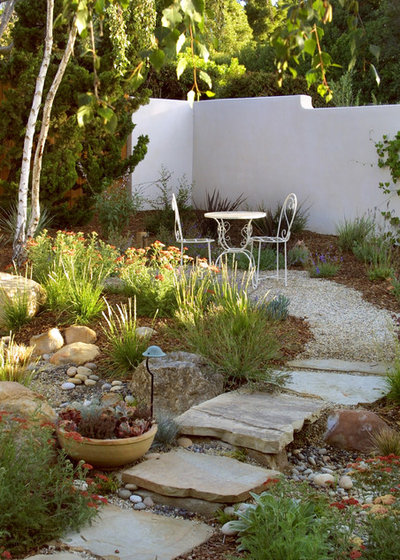
Margie Grace - Grace Design Associates
“Our current drought has taught us we need to change the way we think of landscaping,” says Paul Groth, professor emeritus of architecture and geography at the University of California, Berkeley. Of the revised restrictions, he says, “The most striking effects will be in all-new areas at the growing edges of towns and cities, and perhaps in the use of greywater systems encouraged by the new regulations.“
Landscape designer Grace says the rule changes won’t alter how she designs. “We’ve been guided by our own compass much more than by what is required by local agencies and ordinances. What it will do is create the environment in which our clients are receptive to new ideas, new design solutions.”
Grace adds, “A Mediterranean climate with its rhythm of seasonal rain followed by the dry season supports a rich and varied flora — and fauna — with its own unique charms and its own unique attractions.”
More:How to Replace Your Lawn With a Garden
Grow a Beautiful Garden With Ecofriendly Greywater
Find a landscape architect or designer near you





